Best Wi-Fi 6 mesh routers 2024: Solving wireless dead spots
Connect wired and wireless devices around your home to a rapid mesh Wi-Fi 6 network.
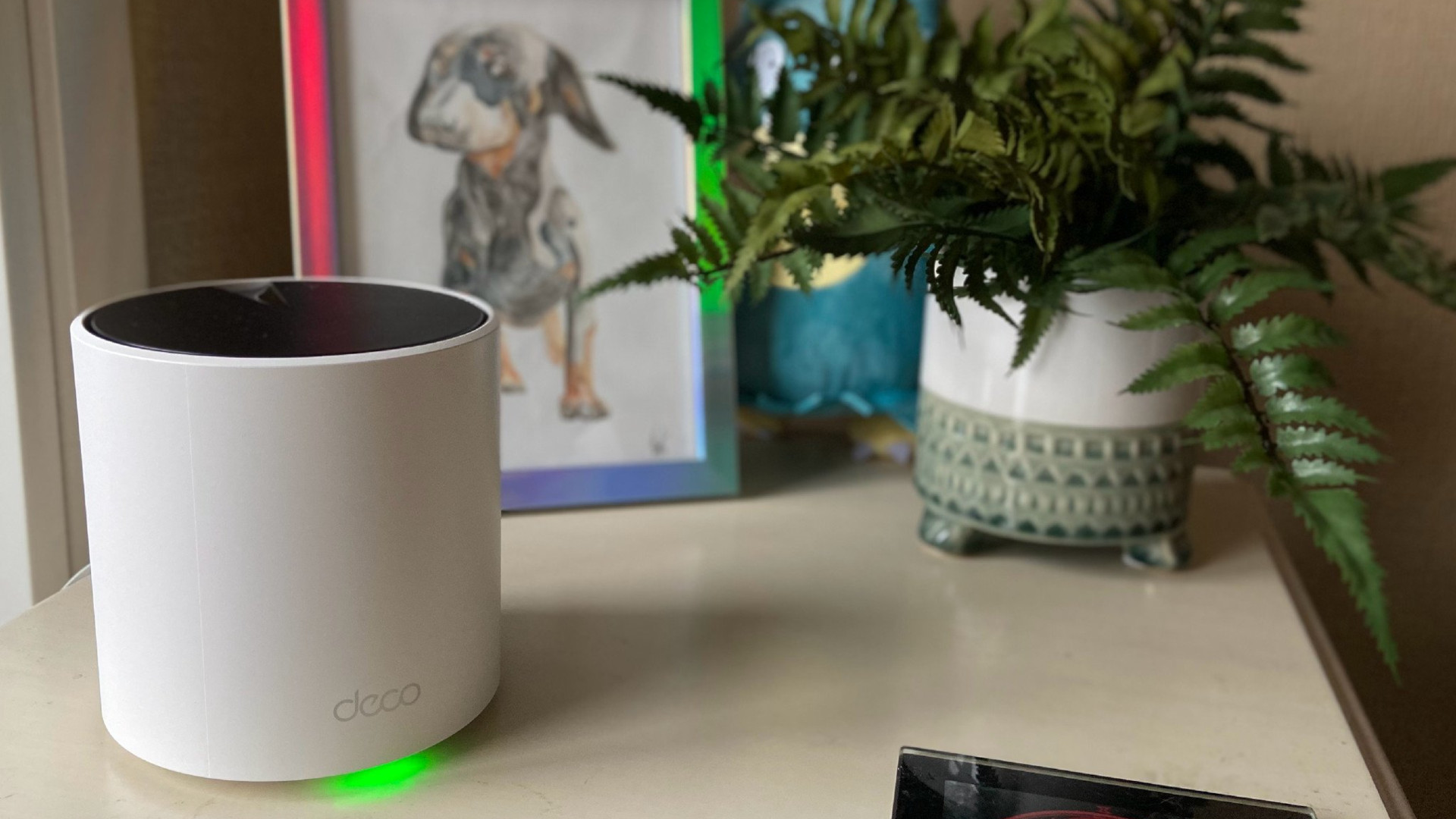
Using one of the best Wi-Fi 6 mesh systems, you can connect all the devices and applications within your home that rely on a reliable Internet connection. Broad compatibility and high-performance networking offered by this modern Wi-Fi standard can accommodate bandwidth-intensive services, such as Xbox, Netflix, and YouTube, even for wired devices like desktop computers. Mesh Wi-Fi systems are well suited to larger homes and office spaces since adding extra units to fit your building is often incredibly simple.
Beaming a high-bandwidth Wi-Fi 6 signal throughout your home with a mesh system means devices can seamlessly connect as you move around, removing the need to switch between individual routers. I've picked the best Wi-Fi 6 mesh routers with alternatives to fit your budget from the most popular brands like TP-Link and Netgear.
The best Wi-Fi 6 mesh systems for you
Why you can trust Windows Central
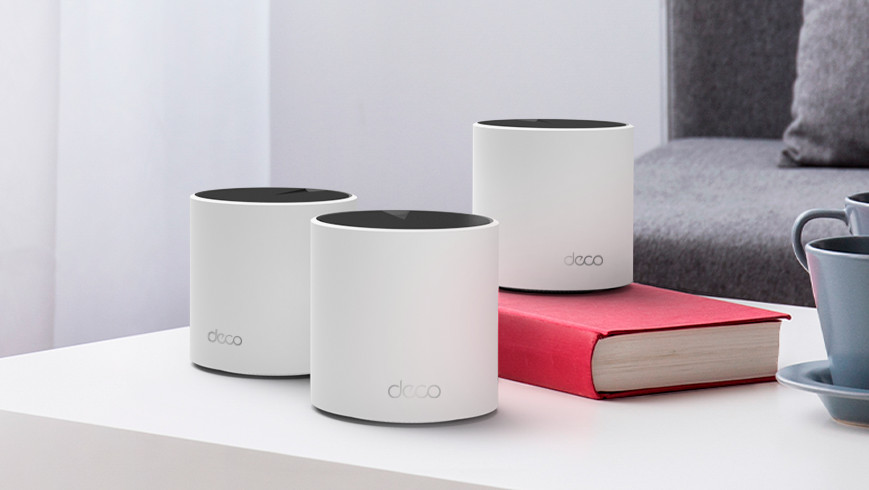
TP-Link Deco X55
Specifications
Reasons to buy
Reasons to avoid
One of the longest-standing networking manufacturers, TP-Link, knocked it out of the park with its Deco X55 mesh system. Available as a single unit, a 2-pack, or a 3-pack, the AX3000 whole home Wi-Fi 6 set provides an effortless setup process with the help of its companion mobile app for iOS and Android devices. Proving a genuine solution to wireless dead zones caused by thick-walled home foundations in our TP-Link Deco X55 review, it remains my permanent mesh solution to home networking.
Using a modem or an ISP-provided combination router set to modem-only mode, you can take advantage of the comprehensive dashboard available in the Deco via a web browser or the mentioned app. Set three units in the optimal positions around a home and watch the software run a network optimization tool to automatically select the Wi-Fi channel least affected by interference or congestion, repeatable whenever you wish.
Each Deco has three Gigabit LAN ports perfect for connecting desktop computers, smart devices, or anything that usually performs better with a wired connection. Keeping my home office connected is critical, and the Deco X55 set has never failed me during a full year of use. Its dual-band setup offers up to 3,300Mb/s of combined bandwidth, pairing with the Ethernet ports making it an ideal solution for most people with any Internet package rated up to a Gigabit.
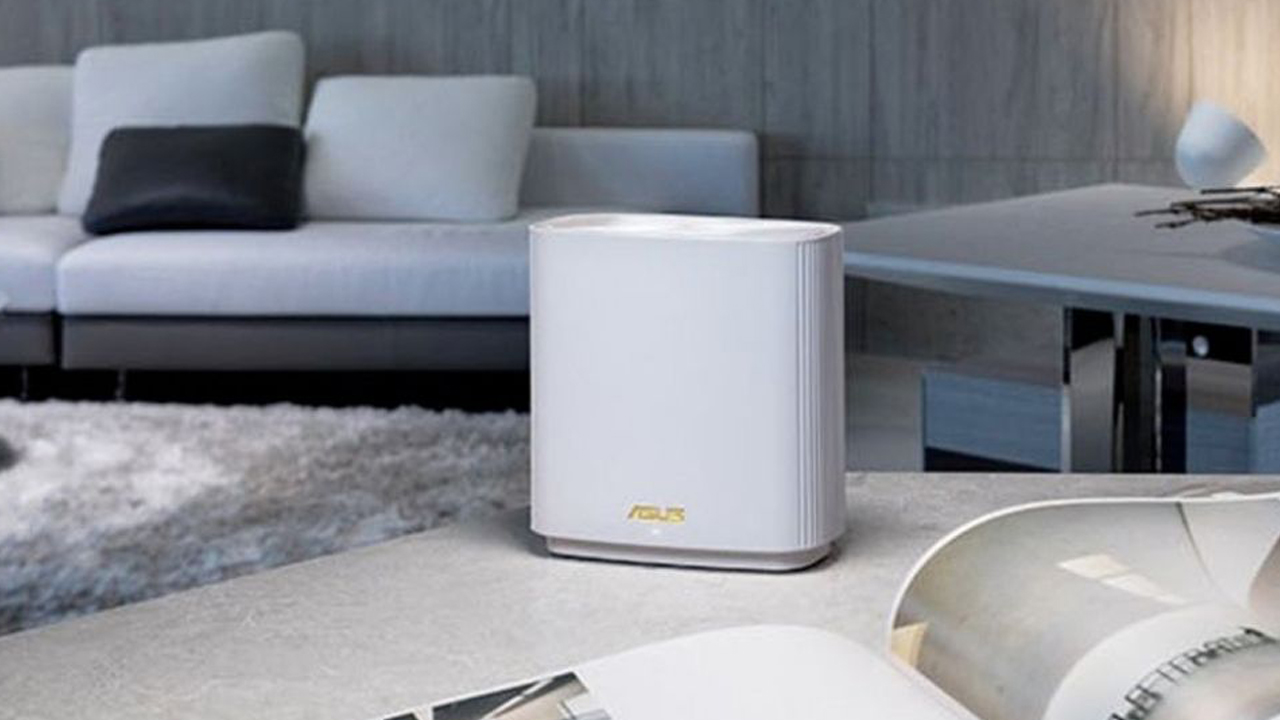
ASUS ZenWiFi XT8
Specifications
Reasons to buy
Reasons to avoid
The ASUS ZenWiFi XT8 2-PK comes up against the TP-Link Deco X90 as a powerful tri-band two-pack mesh Wi-Fi system that delivers a fast and stable connection to wireless devices throughout your home, packaged in a chunkier case that still looks good on display. Equipped with Wi-Fi 6 features such as OFDMA technology, it can easily handle the demands of multiple users while offering speeds that are perfect for streaming high-definition video and playing games.
The XT8 system consists of two or more wireless routers that create a seamless network allowing you to enjoy broader coverage than traditional routers, controlled by ASUS' companion app. It also supports voice control through Google Assistant or Amazon Alexa, so you can manage the online activity of your whole family from anywhere using voice commands.
While the XT8 2-PK can realistically support up to 200 devices, the number may vary depending on several factors. The type and speed of your Internet connection, the distance between the routers, and the software running on each. Its 2.5G WAN port supports Multi-Gig ISP packages, so anyone with high-speed Internet should be fine.
The ASUS ZenWiFi XT8 has several ports available for different purposes. On the back of each router, you will find 1x Gigabit WAN port for your modem and 4x Gigabit LAN ports for joining wired devices to the network. A single USB 3.0 port on each can connect to a network-attached storage (NAS) or printer, allowing you to share files and print wirelessly.
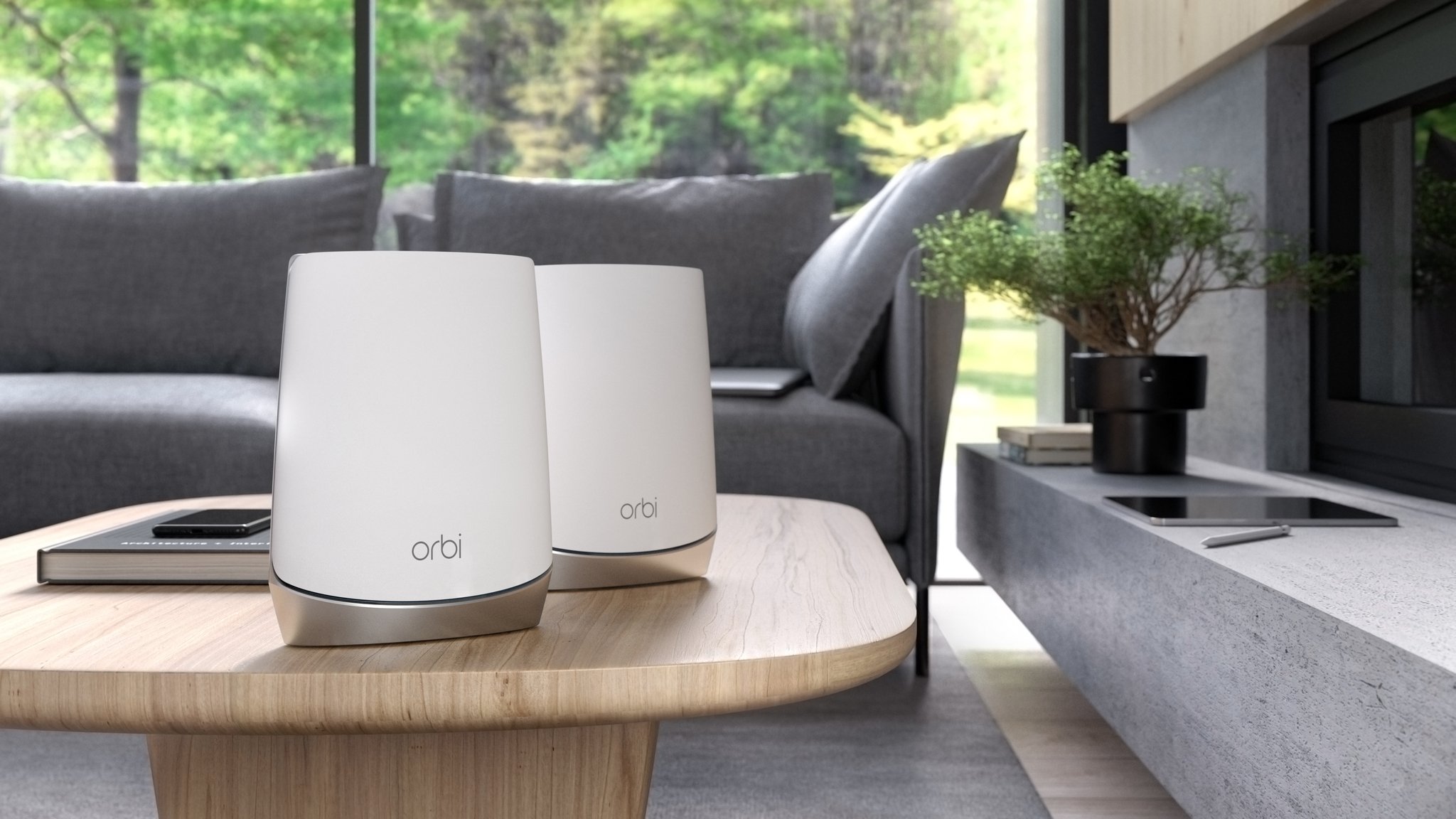
Netgear Orbi RBK752
Specifications
Reasons to buy
Reasons to avoid
The Orbi systems from Netgear were another mesh solution featuring the Wi-Fi 6 standard that launched in 2020, ready to provide speedy and reliable Internet coverage around the home. The RBK752 two-pack is equipped with the usual 802.11ax luxuries, such as beamforming, to deliver stable traffic to each connected device, and built-in parental controls make it easy to manage activity for each.
One of the largest in this collection, the Orbi mesh isn't as rounded as the name suggests, and you'll need enough space to position them correctly. Thankfully, their design is beautifully subtle and doesn't resemble the sci-fi aesthetics featured on some modern networking hardware.
Since it's a tri-band set, the Orbi has an extra Wi-Fi frequency band to move traffic around the network faster with more reliable connections. While many mesh systems and standalone routers use only two frequency bands (2.4GHz and 5GHz), the RBK752 adds a third 5GHz band, allowing it to quickly send traffic back to the router along a dedicated Wi-Fi backhaul. Tri-band Wi-Fi is especially useful in homes with many devices, which can otherwise put a lot of strain on your Wi-Fi.
Although the Ethernet ports on each Orbi offer Gigabit speeds individually, they can combine to support Multi-Gig Internet by using link aggregation (LAG.) The method, also known as bonding, combines ports to function as a single high-speed connection. If you have 2x 750MB/s connections, line aggregation can combine them into a single 1500MB/s line. The name sounds complex, but the technology isn't difficult to use.
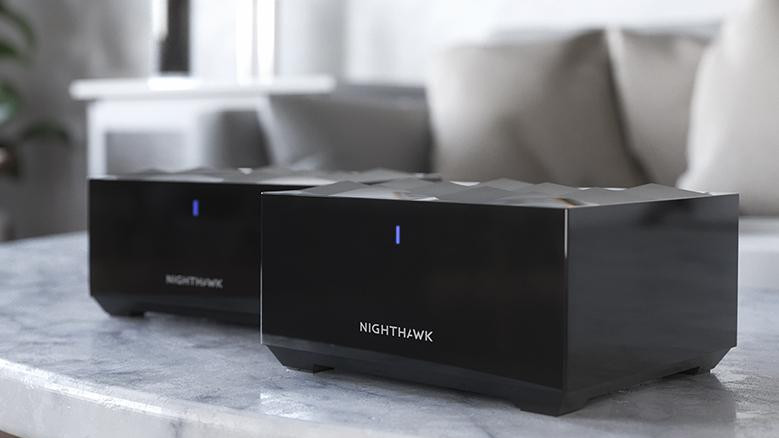
Netgear Nighthawk MK62
Specifications
Reasons to buy
Reasons to avoid
Another from Netgear, the Nighthawk MK62, is a two-pack Wi-Fi 6 system offering the same wireless mesh benefits without a steep price tag. It's also one of the most compact sets and features a somewhat art-deco aesthetic with a sharp-angled finish along the top. This affordable two-pack set is an ideal solution to poor wireless networking with a discreet yet stylish design, covering up to 3,000 sq. ft.
Featuring single Gigabit WAN and LAN ports for a modem and one other wired device could limit your connection options via Ethernet. Still, careful planning could see you benefit from this entry-level option and enjoy the benefits that the 802.11ax standard brings. The dual 2.4 & 5GHz bands provide a combined line rate of 1.8Gb/s (1200 + 600Mbps,) enough to serve around 25 devices simultaneously.
The MK62 still supports Netgear's Nighthawk companion software on iOS and Android. The app helps you manage both mesh units and monitor everything connected wired or wirelessly. Use it to set up and configure the Nighthawk mesh, use parental controls, and diagnose potential issues. It's one of the most affordable ways to get started with a mesh Wi-Fi network, and the 802.11ax tech provides speeds up to 1.5x faster than the previous 802.11ac standard.
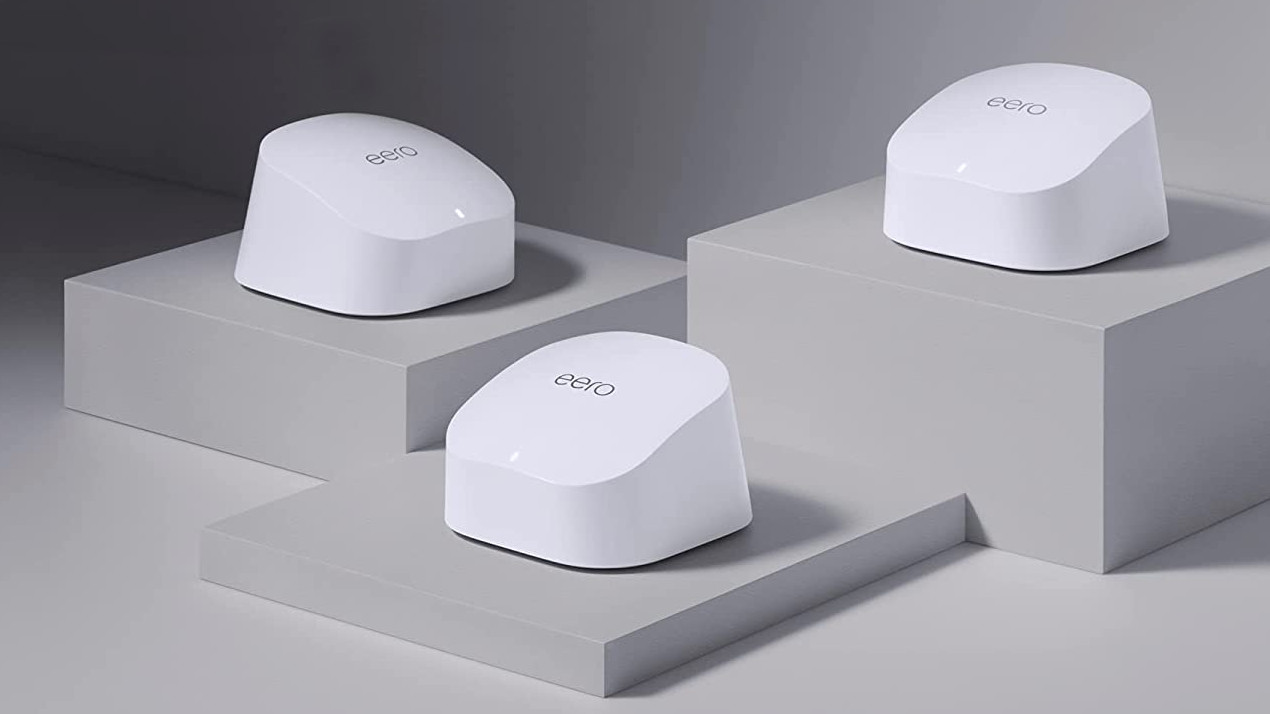
Amazon Eero 6
Specifications
Reasons to buy
Reasons to avoid
Amazon offers its first-party Wi-Fi 6 mesh system to cover up to 5,500 sq. ft. with reliable Internet access if you choose the triple-pack of Eeros. It's one of the simplest models to set up and use, paired with a compact and discreet design to easily place around your home without taking up too much space. The companion Amazon Eero app is compatible with iOS and Android devices, using Bluetooth to make the initial connection to each node.
It is a dual-band system, but the 2.4 and 5GHz bands will combine to create a single network. It won't be an issue for novice users looking for simplicity but still something to consider for anyone looking to keep the faster 5GHz band separate for specific devices. If you're paying for a package providing around 500Mb/s speeds from your ISP, the Eero 6 will easily cover up to 75 devices in your home over its 1,800Mb/s bandwidth.
The Eero 6 is an appropriate mesh Wi-Fi choice for any household invested in the Amazon ecosystem, working alongside the Alexa smart speakers to offer parental controls and manage network traffic on any device. It's not the fastest option, so consider your desired speeds before purchase, but the Eero 6 offers an incredible range of coverage for an affordable price.
What is Wi-Fi 6?
Wi-Fi 6, sometimes known by its official label 802.11ax, is one of the latest Wi-Fi standards designed for faster and more efficient networking with improved support for several devices connected simultaneously and better overall performance in crowded homes and offices. We have a deeper breakdown of everything you need to know about Wi-Fi 6 if you're intrigued by the specifics, but let's keep it simple for now.
Wi-Fi 6 is backward compatible with previous generations, but products that officially support the 802.11ax standard will enjoy the best experience while operating in the 2.4 and 5GHz bands. For example, the Xbox Series X|S both use the 802.11ac standard, also known as Wi-Fi 5, and will still connect to a modern mesh network without issue.
Technical specifics to the standard, such as OFDMA (orthogonal frequency division multiple access) and MU-MIMO (multi-user multiple input multiple output,) can sound overly complex to a networking beginner. Still, they bring improvements to communication speeds and reductions of network congestion with very little user input needed if using the factory settings for most Wi-Fi 6 mesh systems.
How do I choose the best Wi-Fi 6 mesh router?
The best Wi-Fi 6 mesh router will depend on your environment but should provide high-performance wireless networking without compromising convenience or raising costs. Ensure that your selected set can cover the full range of your home, and consider the obstructions between each room, such as the thickness of foundations and other electronic equipment.
A suitable set will reach farther than some of the best Wi-Fi 6 single routers, thanks to the nature of mesh systems sending traffic from point to point rather than relying on a single unit, so they're perfect for larger buildings.
Mesh systems with higher bandwidth will allow more devices to connect to your network and share data fairly. Any laptops using the Wi-Fi 6 standard, like the Surface Pro 8, can fully use modern enhancements like beamforming, which aims wireless signals towards a specific device rather than in all directions.
Finally, confirm that any mesh Wi-Fi system is compatible with the modem provided by your Internet service provider (ISP.) Otherwise, consider using access-point (AP) mode if you can't replace your current combination modem/router but still need to extend your wireless network. AP mode might not be listed on your chosen set, but it is available in our best overall Wi-Fi 6 mesh choice, the TP-Link Deco X55.
Get the Windows Central Newsletter
All the latest news, reviews, and guides for Windows and Xbox diehards.

Ben is a Senior Editor at Windows Central, covering everything related to technology hardware and software. He regularly goes hands-on with the latest Windows laptops, components inside custom gaming desktops, and any accessory compatible with PC and Xbox. His lifelong obsession with dismantling gadgets to see how they work led him to pursue a career in tech-centric journalism after a decade of experience in electronics retail and tech support.
